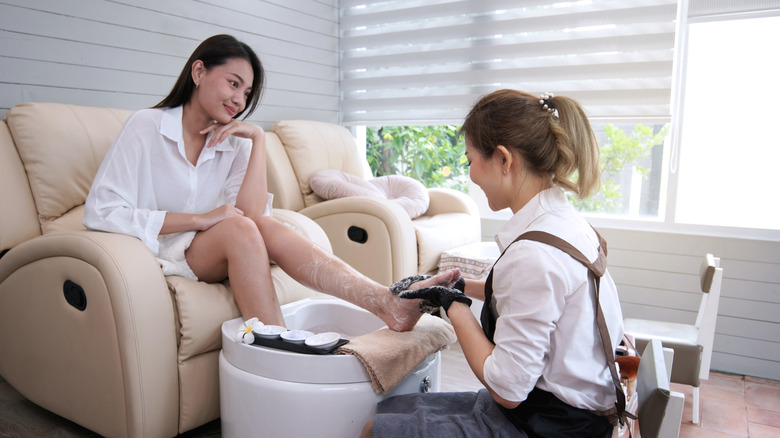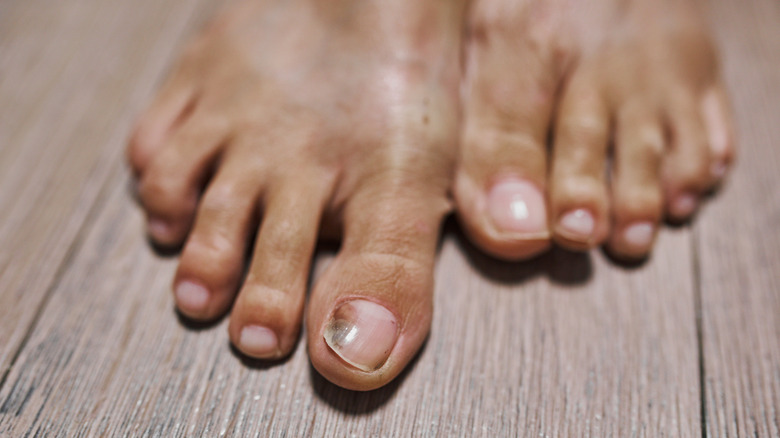Do You Need To Take Breaks From Pedicures?
We may receive a commission on purchases made from links.
With how many summer pedicure trends we see every year, it can be tempting to have an appointment booked every few weeks during the months of May through August. However, if nail health is a priority, you may want to think twice about this. Sorry to break it to you, but staying on top of your regular pedi may be as bad as wearing nail polish every day.
According to Dr. Brendan Camp, a double board-certified dermatologist of MDCS Dermatology, getting pedicures too often, especially with polish, isn't exactly doing your toes any favors. "[The] Chemicals used in cleaning or application of polish can dry the nail, causing it to weaken and become soft or brittle," he exclusively tells Women.com, noting that over time, it impacts the strength and quality of the nail plate.
Dryness is only the beginning of your problems if you go overboard at the salon. Dr. Camp explains, "Repeated manipulation of the nail plate and prolonged use of polish can cause discoloration or staining of the nail, sometimes mimicking the appearance of fungal nail infection." Moreover, frequent pedicures can make your skin and nails more vulnerable to other skin conditions, like athlete's foot; though this is more likely to be the case if the salon is not following proper sanitation practices. That said, this doesn't mean you have to skip your pedi visit all together during the summer. You just need to make sure you're giving your nails time to recover. If you see any kind of yellowing, thickening, swelling, and redness, it just might be your toenails telling you they need a break.
Let your toenails go polish-free for a few weeks
Regardless of the type of pedicure you're trying to get, it's important to give your toenails time to breathe after several weeks of polish wear. This rule applies even if you only plan to get one pedicure during the summer. "Extended wear can increase the risk of whitish nail discoloration, which occurs when polish alters the superficial portion of the nail," Dr. Brendan Camp exclusively tells Women.com. In order to avoid any surface damage and discoloration, Dr. Brendan Camp recommends removing polish after three to four weeks of application, regardless of whether it's chipping. This will allow the nails time to grow naturally.
If you're looking for ways to keep your feet looking good between appointments, the double board-certified dermatologist has some tips. He says that using a foot moisturizer with exfoliating elements such as urea or lactic acid can keep your feet, especially your heels feeling soft. If you're going to opt for home trims, he adds that it's crucial not to "push back the cuticle over the nail" as its job is to protect the nail plate. Doing so can cause damage to the nail and surrounding area, which increases your risk of infection exposure — regardless of whether you're using polish.
Finally, if you want to maximize softness and prevent hangnails, reach for a a cuticle oil or cuticle balm, such as Qtica Intense Cuticle Repair Balm. Time for a trim? Keep it simple. "Trim toenails straight across, not curved," says Dr. Camp.

